Why cattle markets haven’t made new record highs
Posted on October 16, 2024
Source: Farm Progress. The original article is posted here.

By Trey Freeman, Ever.Ag
Why have cattle markets not made new record highs in a while? Here are a few possible reasons.
Year-to-date through August, beef imports are up 20.87%, or 523.7 million pounds. Quotas on South American countries, especially Brazil, have been of little deterrence – paying the tariff is still a better alternative to shipping beef to other countries. This is likely to continue at a strong pace to close out the year as importers look to shore up supplies for 2025, with the anticipation that domestic slaughter will stay at reduced levels, or experience even deeper cuts, as the U.S. herd is rebuilt. Additionally, Australia, which is now approaching their cyclical peak, has plenty of beef available to the global market as improved weather has allowed their herd to grow.
Meanwhile, beef exports are down 3.58% year-to-date through August, or 74.6 million pounds. Exports to China have been a large piece of the overall weaker picture due to a struggling economy. Exports to Korea have also suffered. On a value basis, exports to Korea are basically unchanged, up 1.9% year-to-date, while many other countries are in double-digits gains. This suggests they are one of the more cost-conscious countries and not willing to pay up. Overall, a strong U.S. dollar is broadly the dampening factor weighing on exports.
Feeder cattle imports are up 21.72%, or 186,600 head. Imports of cattle for immediate slaughter are up 19.5%, or 64,190 head. Drought conditions in Mexico, along with improving genetics in their beef cow herd, have boosted the amount of cattle being pulled across the border to help meet supply needs.
Dressed steer weights are averaging 923 pounds for the year through August, 24 pounds higher than a year ago. Dressed heifer weights are averaging 842 pounds, 20 pounds higher than a year ago. The heavy weights have now offset the lighter kill numbers year-to-date through August, with fed production up 1.81%, or 296.8 million pounds. Cheap feed prices and smaller cattle numbers will continue to incentivize more days on feed to maintain feedlot inventories.
On Tuesday, futures succumbed to heavy selling pressure after stalling out on the charts at $190.00/cwt. in live cattle and $250.00/cwt. in feeder cattle.
December live cattle had rallied over $15.00/cwt. from early September. Managed money was a large force behind the sharp advance. They are now net long 77,964 contracts in live cattle, their largest net long position since July 30 this year. This is the largest 3-week buying period for managed money since April of last year in live cattle.
November feeder cattle had rallied nearly $25.00/cwt. since early September, with managed money now net long 6,449 contracts, their largest net long position since May 28. This is the largest 4-week buying period for managed money since March of last year in feeder cattle.
Looking to the macro front, the September 2024 CPI released last week was slightly softer than expectations. The headline number was a 2.2% year-over-year increase, with food away from home increasing 3.9% and food at home increasing 1.3% year over year. This pattern of higher restaurant menu prices compared to grocery prices has been persistent and is a continued overhang pushing cost conscious consumers to do more at-home eating. The all-fresh beef retail price released last week for the month of September jumped another 5 cents per pound (lb.) to $8.21/lb. This is 39 cents/ lb. higher than in September of last year. Now that there is a well-established pattern of consumers being pushed to the grocery store, how high can beef prices go at the meat counter before consumers begin reaching for cheaper proteins? Overall, beef demand has a lot of weight to bear.
The risk of loss trading commodity futures and options can be substantial.Investors should carefully consider the inherent risks in light of their financial condition. The information contained herein has been obtained from sources to be reliable, however, no independent verification has been made.The information contained herein is strictly the opinion of its author and not necessarily of Ever.Ag and is intended to be a solicitation. Past performance is not indicative of future results.

.jpg?disable=upscale&width=1200&height=630&fit=crop)


